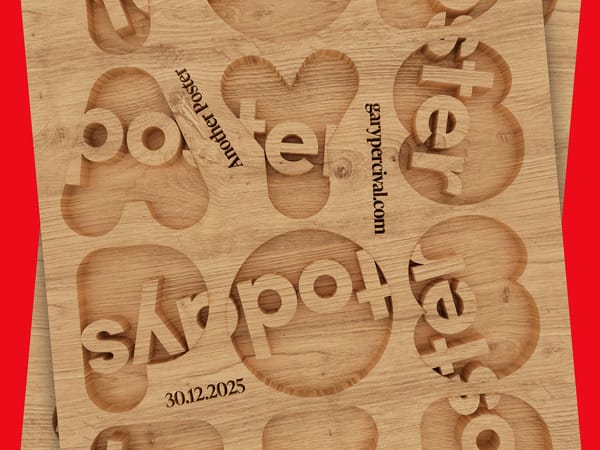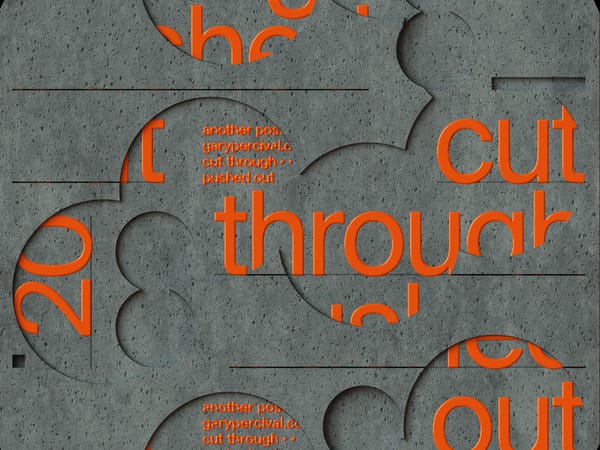Embracing Difficult Conversations: A Path to Growth for Creatives
"Difficult conversations, when approached with the right mindset, can be the catalyst for your most significant improvements."
In our world of design and visual communication, we often find ourselves at a loss when it comes to verbal communication, especially the difficult kind.
Yet, these challenging conversations are often the catalyst for our most significant growth, both personally and professionally.
Today, we're diving into why difficult conversations matter and how to navigate them effectively.
🎯 Why Difficult Conversations Matter
- They Force Us to Confront Reality: Often, we live in a bubble of our own making. Difficult conversations burst these bubbles, forcing us to see things as they really are. This clarity, while sometimes painful, is the first step towards meaningful improvement.
- They Promote Professional Growth: When a client tells you your design missed the mark or a colleague points out inconsistencies in your work, it's not just criticism; it's an opportunity to improve and refine your skills.
- They Build Stronger Relationships: Paradoxically, difficult conversations, when handled well, can strengthen relationships. They demonstrate that you value honesty and are committed to growth.
- They Enhance Problem-Solving Skills: Navigating difficult conversations requires creativity, empathy, and analytical thinking—all skills that are directly applicable to our work.
💬 Types of Difficult Conversations in Creative Fields
- Client Feedback Sessions
- Pricing Discussions
- Missed Deadlines or Quality Issues
- Creative Differences with Collaborators
- Self-promotion and Networking
🛠️ Strategies for Navigating Difficult Conversations
- Prepare, But Don't Over-Rehearse: Gather your thoughts, but be prepared to listen and respond authentically in the moment.
- Put Yourself in Their Shoes: Try to see the situation from the other person's perspective.
- Use "I" Statements: Instead of saying, "You're wrong about this design," try, "I see this design differently, and I'd like to explain my perspective."
- Listen Actively: Practice active listening—pay attention, ask clarifying questions, and summarise what you've heard to ensure understanding.
- Acknowledge Emotions, But Stay Professional: It's okay to acknowledge that the conversation is difficult, but keep your emotions in check.
- Focus on Solutions: Steer the conversation towards finding solutions rather than dwelling on problems.
- Follow-Up: Send a follow-up email summarising the key points discussed and any agreed-upon actions.
🥋 The Art of Conversational Aikido
Inspired by the martial art of Aikido, we can apply similar principles to our difficult conversations:
- Redirect, Don't Resist: Instead of becoming defensive, redirect the energy of the conversation.
- Find the Hidden Opportunity: Every difficult conversation contains a seed of opportunity. Train yourself to spot these.
- Master the Art of the Pause: Learn to pause before responding. This moment of reflection can be crucial.
- Practice Verbal Footwork: Develop flexibility in your communication. Be prepared to shift your approach mid-conversation if needed.
- Approach with a Clean Slate: Approach each difficult conversation as if it's your first, staying open to new perspectives and solutions.
- Use 'Conversational Throws': Use questions to 'throw' the conversation in a more productive direction.
- Cultivate Balanced Energy: Practice staying calm and centred, even when the dialogue gets heated.
🌱 The Long-Term Benefits
While these conversations may be uncomfortable in the moment, the long-term benefits are immense:
- Improved Work Quality
- Better Client Relationships
- Enhanced Problem-Solving Skills
- Increased Confidence
- Personal Growth
🚀 Embracing the Discomfort
Remember, growth rarely happens in our comfort zones. As creatives and designers, we're used to pushing boundaries in our work. It's time we apply that same mindset to our communication.
The next time you feel that knot in your stomach, signalling a difficult conversation ahead, try reframing it. This isn't just a hurdle to overcome; it's an opportunity for growth, learning, and ultimately, becoming a better creative professional.
Difficult conversations, when approached with the right mindset, can be the catalyst for your most significant improvements. They can lead to breakthrough designs, stronger client relationships, and a more resilient, confident you.
So, the next time honesty hurts, lean into it. Embrace the discomfort. On the other side of that difficult conversation lies growth, understanding, and a path to becoming the best creative professional you can be.
Remember, in our field, it's not just our visual communication that matters. Our ability to navigate difficult verbal communications can be the difference between a good designer and a great one. Let's embrace honesty, even when it hurts, and use it as a powerful tool for growth and success in our creative journeys.
Here's to your continued growth and success!
Thanks for reading!
—Gary



